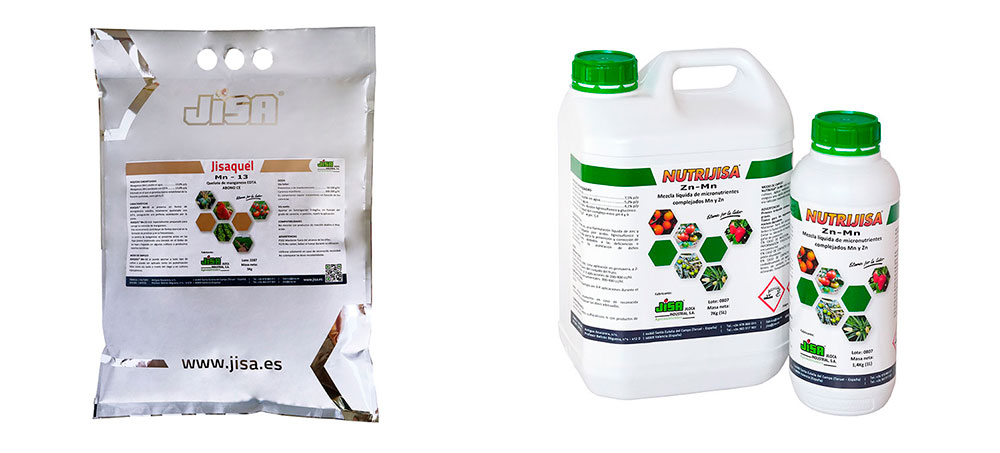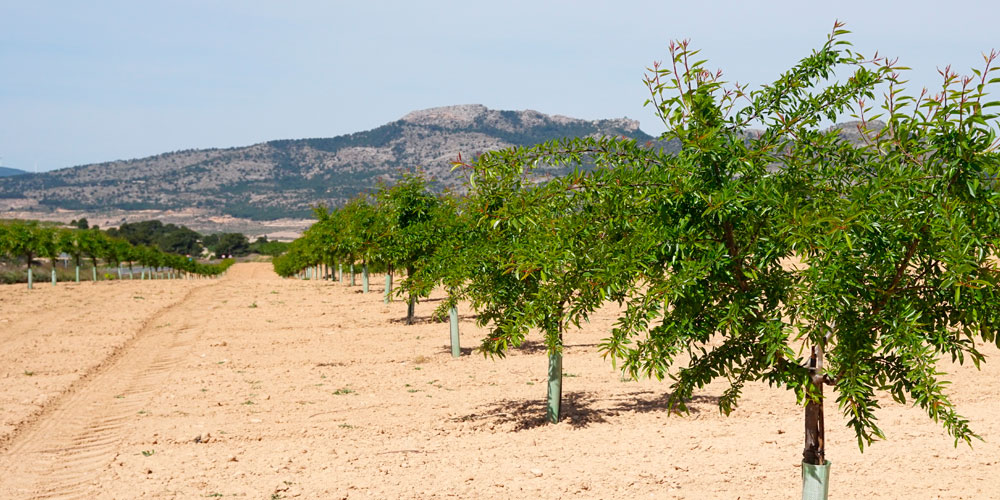One of the trace elements used in plant nutrition is agricultural manganese.
Manganese is symbolized as Mn and as a chemical element has atomic number 25, being located in group 7 of the periodic table of the elements.
This element is found as a free element in nature, often in combination with iron in addition to many other minerals.
Manganese is identified as trace element and therefore an essential chemical element for all life forms.
At biological level, it is well known that in humans it is vital for the normal functioning of the immune system, the regulation of blood sugar and cellular energy, bone growth, etc. Regarding plants as well, occupying an important role in oxygen photosynthesis and therefore many of the fertilizers contain manganese in their formulation.
Manganese in the plant
The manganese in the plant is absorbed under the form Mn+2 and as a cheate. It can be absorbed by root and foliar route.
The content in leaves ranges from 30 to 500 ppm over dry weight. This content is lower in the rest of the plant, such as stems, fruits and roots.
Manganese deficiency in the plant begins critically when it is placed at about 15 to 25 ppm on dry foliar weight. It usually develops initially in young leaves in the form of chlorosis between the midribs. This is because it is not a very mobile element in the plant, just like iron (Fe.)
As for its excess, its presence is rare. If given the presence, it coincides in crops with acidic soils and one of its symptoms is the appearance of brown spots on the leaves. This toxicity can occur with foliar levels greater than 1000 ppm of Mn.
Manganese on the ground
The manganese that we can find in the soil is caused by the decomposition of ferromagnesian rocks. Between 200 and 300 ppm is the total average content that can be had in it.
Generally, manganese on the ground is found under insoluble pH forms and high redox potentials. The Redox potential (ORP) is an effective measure to determinate the chemical energy of oxidation-reduction through un electrode, converting it into electrical energy. On the contrary, acidic pH and reducing conditions, favor their presence in soluble divalent forms.

For agronomic purposes, manganese in the soil is classified into soluble or active manganese and insoluble manganese. The first, being in the dissolution of the soil and in an interchangeable state adsorbed by the colloidal fraction, as well as in the form of very active oxides and easily reducible to neutral pH. And the second, for example, under low active oxides and not reducible to pH neutral, although it can be reducible at pH 2.
It should be noted that the availability of manganese in the soil is usually high in acidic soils and in lacerated soils. In these cases, in certain situations it can even become toxic.
Similarly, the level of manganese available to the plant may be decreased due to competition from microorganisms. It can also be immobilized in the presence of large amounts of organic matter.
Manganese deficiency correctors
JISA Advanced Agro formulates Jisaquel Mn-13, a solid soluble micro granule. It is the specific concealer of manganese deficiency released by EDTA which allows a perfect assimilation by the plant.
Its application can be both foliar and via soil in fertigation, favoring the optimal level of manganese, which contributes essentially in protein formation and photosynthesis.
In liquid formulation and in the event that a deficiency or imbalance in zinc assimilation is also presented or expected, JISA Advanced Agro recommends in this case the Nutrijisa Zn-Mn: Liquid formulation of zinc and manganese complexed by gluconic acid and lignosulfonic acid.
Nutrijisa Zn-Mn, as well, allows foliar application and fertigation through the soil.
